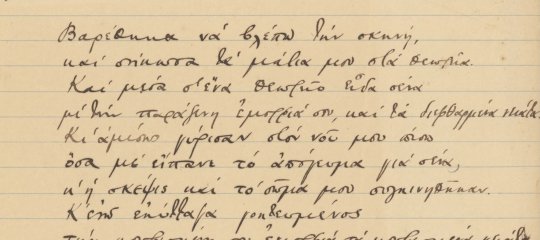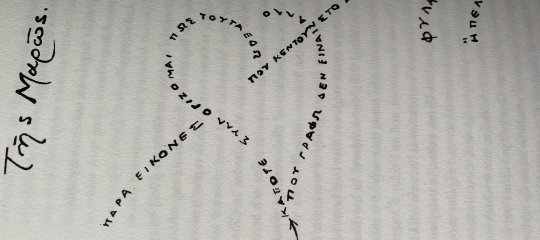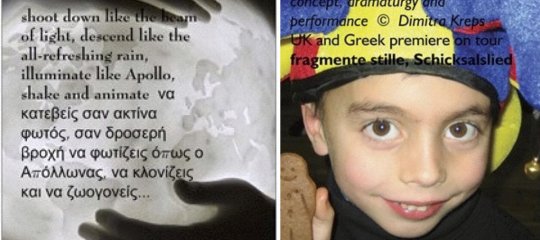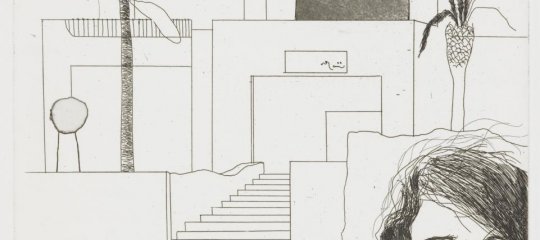"TEACHING FOREIGN LANGUAGE THROUGH LITERATURE" BY MARIA KAVOURI
INTRODUCTION
From the antiquity we have information about the foreign language teaching methods, particularly Ancient Greek language to Latin people. Consequently, during the Hellenistic times, the Koine Greek, which reigned as “lingua franca” among the great Hellenistic multicultural empire, was taught for a great number of purposes: trading, legislating or simply living and participating to the public life of the Hellenistic empire. Rosetta’s Stone discovery and it’s decipherment confirms that. The Greek language written on papyrus discovered in Asia, also confirms the Greek language spread all over the known world. During the early-Christian period the Koine Greek was taught for the reading of The Holy Scriptures. Furthermore, the Ancient Greek and Latin language learning, represent the greatest aspiration of all the cultured people in the learning languages fields in all the times.
In our days also the interest on the Modern Greek language exists as well as the continuum of the Ancient Greek language for various other purposes. There are different causes that move people learning Modern Greek language. Firstly the Greek people children who live abroad in order to maintain their mother-tongue, secondly Italian people with the desire to establish themselves in Greece, especially people in retirement attracted by the good weather and the quality of life or because of marriage with Greek people. In the last years, Greece keeps commercial relationships with a great deal of European countries in stable basis and very often employees of factories, or people who often travels in Greece for work, decide to learn Modern Greek. In Italy this reality is frequently managed by the Universities or the Greek communities disseminated in the greatest cities of Italy. Otherwise, teachers take Modern Greek classes in private language schools. Everyone approaches Greek language with a great respect and interest, having studied Ancient Greek language before.
As all of us well know, the first method that has been used in order to teach a foreign language was the Grammar- Translation method, because of the necessity to translate documents rather than speaking. It was a method based on the study of the structure of the language such as the grammar and the lexicon. With the passing of time new theories, more or less efficient, take part in the linguistic scenario and one gives its place to the other. Currently, the most favourite teaching method is a mix of various methods of approach, in order to assure a full immersion in the language target and expose the learner in the most quantity of input.
By the spreading of Internet the linguistic scenario is really changed. A great deal of electronic tools which help foreign language teaching are available online.
We can find newspaper’s corpora, songs, speeches, films, journals in the foreign language. With the support of the Hot Potatoes a suite of Web authoring tools by Half-Baked Software Inc. and the University of Victoria Humanities Computing and Media Centre, is possible to design exercises through the pc and obtain a good students’ evaluation from distance.
There is also the Dialang, a diagnostic software which permits to us a very faithful evaluation on the student’s linguistic competences. It is available in 14 languages and it examines 5 abilities such as listening, reading, comprehension, lexicon.etc
Finally, we can keep a BlogSpot which keeps in touch with the students, especially when it is possible to withdraw learning material or have feedback from the teacher.
As a Greek language teacher in Italy, I’ll illustrate my work in multicultural classes to adults, starting from my own electronic tools like my Blog Spot http://mariakavouri.blogspot.com and the web site of Fryctories, official site for the support and the dissemination of the Greek language: http://www.komvos.edu.gr/fryktories/ where is possible to find teaching material and share opinions about all the subjects that concern the teachers in order to avoid the teachers’ isolation.
Fryctories has organised a very live teachers’ community through its forum keeping in touch all those people disseminated all over the world, where Greek language is studied and spoken .
Another very important tool for the Greek language teaching is “Diadromes stin didaskalia tis ellinikis glwssas”. It means, “a come along through the Greek language teaching”. This is a supporting programme in a long life learning system, organised from the Greek Minister of Education and long life learning the Greek Language Centre for the Research, based in Salonika and the European Union Social Fund. The aim of this programme is to provide new knowledge to Modern Greek language teachers abroad and update their old knowledge with the most modern systems such as electronic tools, keeping in touch with the learners and the other teachers, exchanging ideas, designing exercises, curricula, students’ and text books evaluation. The programme works from a distance so is available to all over the world teachers and at the end has an official examination.
Here follows the first part of a lesson plan teaching the Conditional clauses and tenses.
LESSON PLAN
|
Level |
Intermediate |
|
Target group |
Adults |
|
Key Concepts |
The little Prince of Antoine de Saint Exupéry |
|
Objectives |
Focus on the conditional tenses and their use |
|
Duration |
2 classes for a total of 90 minutes |
|
Material |
1. Print out with the text and the tables of conditional tenses. 2. Laptop with the Internet connection in order to reach the electronic vocabulary of The Portal for the Greek language. 3. Electronic support material though the program Hot Potatoes for the exercises. |
|
Abilities |
Developing oral communication skills |
|
Standards learning |
The Subjunctive and all the verbal system. |
|
Lesson organization |
Deductive approach |
|
Planning |
PPP |
TEACHING STEPS
PRESENTATION
We would like to teach the conditional clauses and tenses in Modern Greek to Italian students, although the subject is pretty difficult to find in grammar books, we try to explain it through the grammar book “Greek An Essential Grammar of the Modern Language” written by David Holton, Peter Mackridge and Irene Philippaki- Warburton.
We introduce the story of the Little Prince of Antoine de Saint Exupéry and we give the hand out with the text, while we ask students to read and to focus on the phrases in bold, having found and explained the lexicon, they have to look up through The Portal for the Greek language which provides an electronic vocabulary for the Greek language. http://www.komvos.edu.gr/dictionaries/dictonline/DictOnLineTri.htm
Although that story is only a translation into Greek language, I chose it because it is well known by the most students all over the world and the subject is highly moving. Here we can find a little sample of the story so we can understand better the teaching steps Nevertheless it permits me to present it easily in this symposium.
PRACTICE
" The Little Prince "
. The next day the Little Prince came back.
"It would have been better to come back at the same hour," said the fox. "If, for example, you come at four o'clock in the afternoon, then at three o'clock I shall begin to be happy. I shall feel happier and happier as the hour advances. At four o'clock, I shall already be worrying and jumping about. I shall show you how happy I am! But if you come at just any time, I shall never know at what hour my heart is to be ready to greet you . . . One must observe the proper rites . . ." "What is a rite?" asked the little prince. "Those also are actions too often neglected," said the fox. "They are what make one day different from other days, one hour from other hours. There is a rite, for example, among my hunters. Every Thursday they dance with the village girls. So Thursday is a wonderful day for me! I can take a walk as far as the vineyards. But if the hunters danced at just any time, every day would be like every other day, and I should never have any vacation at all."
Here follows the Greek version of “The little Prince” with the conditional clauses in bold as in the English version.
Consequently we will have the conditional tenses organization in grid, exercises and tasks.
At the end we will manage the dramatisation of the text searching to learn the new knowledge.
We divide the students in small groups of two people who have to dramatise the dialogue between the fox and the Little Prince. In this task they have to produce oral speech following the grammar rules of conditional tenses. They also have to learn blocks of words from that text in order to dramatise successfully the story. We choose that text with highly emotional tone, aiming to decrease the “affective filter”. According Krashen’s theory on “the affective filter hypothesis” and its influence on the foreign language learning, the emotional subject as learning material, decreases the affective filter, responsible for the different results on the attainment of a language. This hypothesis explains why the learners being exposed on the same quantity of input have different results on the attainment of a language.
References
- “Greek An Essential Grammar of the Modern Language” by David Holton, Peter Mackridge and Irene Philippaki- Warburton Routledge Tylor & Francis Group.
- Medieval and Modern Greek, Robert Browning, London 1969
- Official web site: “The Portal for the Greek language http://www.komvos.edu.gr/dictionaries/dictonline/DictOnLineTri.htm
- Official web site “Fryctories” for the Greek language dissemination and support : http://www.komvos.edu.gr/fryktories/
- Teacher’s Blog Spot for the students support http://mariakavouri.blogspot.com/2007/10/wellcoming.html
- Dialang – European Linguistic test –(diagnostic software) http://opentraining.unesco-ci.org/cgi-bin/page.cgi?g=Detailed%2F723.html;d=1
- Εισέλθετε στο σύστημα για να υποβάλετε σχόλια











